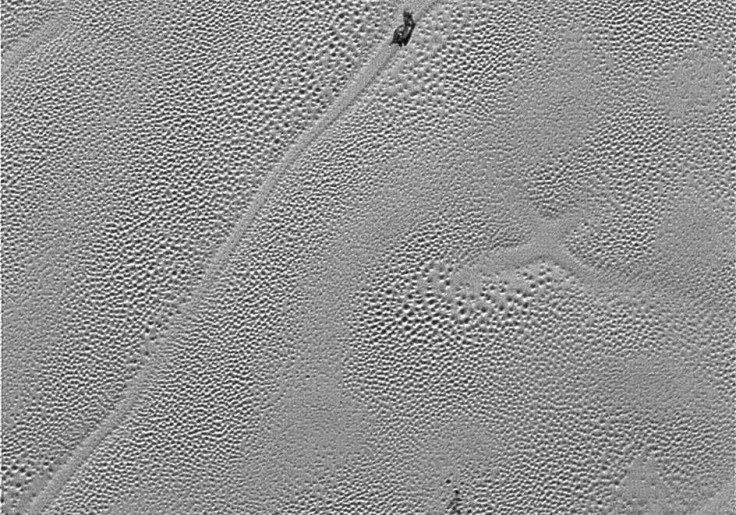NASA’s New Horizons Photographs Big ‘X’ On Pluto’s Surface

In the latest picture of Pluto provided by NASA’s New Horizons spacecraft, astronomers have spotted an “X” indentation, which marks the spot of some “intriguing surface activity” on the dwarf planet. The picture was transmitted to Earth on Dec. 24 from the “heart” of the farthest planet in the solar system.
According to NASA, the new image includes high-resolution views of Pluto that extend to the center of “Sputnik Planum,” also called icy plain, which forms the left side of Pluto’s “heart” feature. Although the icy plain is at a lower elevation compared to most of the surrounding area, it is not completely flat while its surface is separated into cells that are 10 miles to 25 miles wide. The picture is part of a sequence taken near New Horizons’ closest approach to Pluto, with resolutions of about 250-280 feet per pixel.
Scientists believe that the pattern of the cells is the result of slow thermal convection of the nitrogen-dominated ices found on Sputnik Planum. After being warmed up by Pluto’s modest internal heat several miles beneath the surface, this solid nitrogen rises up in great blobs, before it cools down and sinks again to repeat the cycle.
“This part of Pluto is acting like a lava lamp, if you can imagine a lava lamp as wide as, and even deeper than, the Hudson Bay,” William McKinnon, deputy lead of the New Horizons Geology, Geophysics and Imaging team, from Washington University in St. Louis, Missouri, said in a statement.
Scientists observed several computer models by the New Horizons to determine that these blobs of overturning solid nitrogen can gradually evolve and merge over millions of years. Astronomers believe that the ridged margins, which mark the area where cooled nitrogen ice sinks back down, can be pinched off and eventually abandoned.
“The ‘X’ feature is likely one of these — a former quadruple junction where four convection cells meet,” NASA said.
In July last year, New Horizons acquired a photo of Pluto’s surface, revealing a new mountain range located on the lower-left edge of Pluto’s bright, heart-shaped region called “Tombaugh Regio.” Scientists believe that the mountains on the brighter region likely formed less than 100 million years ago, while the darker region probably dates back to billions of years.
© Copyright IBTimes 2024. All rights reserved.





















